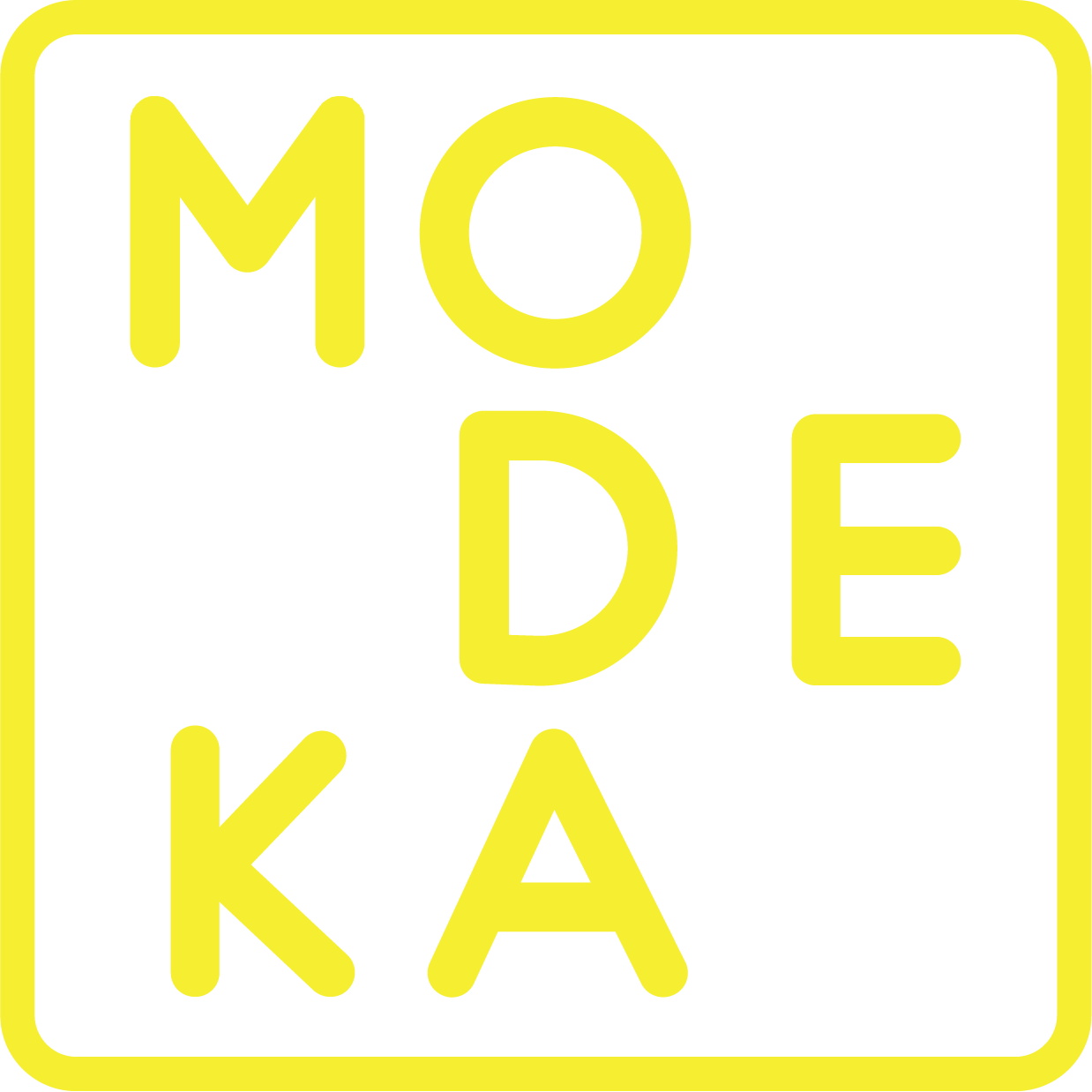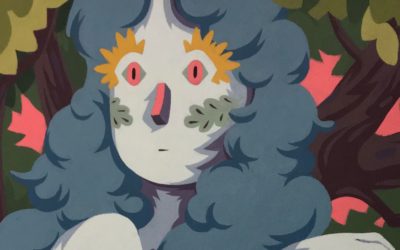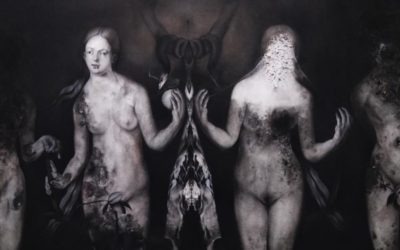Group Exhibition
“I See Therefore I Am”
Showing between April 15 – May 06
FEATURED ARTISTS
Tom Epperson
Jason Quibilan
Antonni Cuesta
Ryan & Garovs Vergara
Veejay Villafranca
Mhygsz Gomez
Basil Paulin
ESL Chen
Frelan Gonzaga
Gio Panlilio
CURATED BY
Stephanie Frondoso
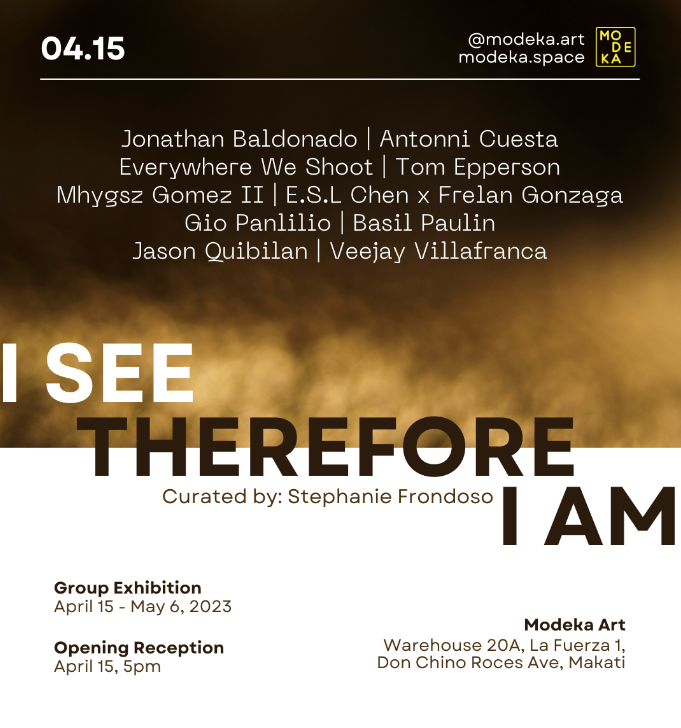
Group Exhibition
“I See Therefore I Am”
The exhibit title is a play on philosopher Rene Descartes’ dictum “Cogito, ergo sum” (I think, therefore I am.) By altering the statement as context for a photography exhibition, focus shifts to how photographers perceive the world. This premise was proposed to 12 photographers, allowing them the freedom to negate or affirm it through their work. With different creative visions and methods, they suggest to us new ways of looking at, thinking about, and understanding our existence.
Much of Tom Epperson’s body of work are abstractions of ordinary objects and shadows. His subjects range from abstracted images of ice, oil on water, smoke, sand, grasses and other natural or manmade elements we often fail to observe more closely. For this exhibit, Epperson’s work Shape and Shadows is a continued exploration of his approach. “By isolating and manipulating the shapes and forms created by light and shadow, I can create images that are both intriguing and mysterious. Abstract shadow photography can evoke a wide range of emotions and interpretations, as viewers are invited to explore the image and draw their own conclusions about its meaning. Abstract photography challenges our perceptions of space and reality.” A second work, Reflection, is inspired by reflections within buildings: “By capturing the way light and objects interact with reflective surfaces stays within what I have been producing lately. These reflections represent the beauty that can be found in unexpected places.”
In a similar vein, the works of Jason Quibilan are part of a series of abstract compositions that appear from a distance as drawn lines, but upon closer inspection reveal that they are actually photographs. “The choice of subject, lighting and framing are intended to disassociate the audience from the fact that these are photographs, which allows the viewers his or her own interpretations of the objects.” These abstractions portray the state of incongruence that exists between order, exactness and predictability, and the random disarray that occurs before equilibrium is attained. Contiguous to the abstractions of Epperson and Quibilan, Jonathan Baldonado depicts the invisible by portraying magnetism—an intangible force that is omnipresent in the modern age. “Magnetism is used in a plethora of devices, ranging from mobile phones, modes of transportation, power stations and numerous other applications.” His series Aóratos (translating to “unseen”), utilizes raw iron filings “to provide a surreal glimpse into unfamiliar dimensions.”
Tackling the unseen from a different angle, Antonni Cuesta furthers his dedication to promoting photography discourse through a critique of visualism, by exploring photography as an act of sight deprivation. The photographs are framed with their backsides facing the audience so that the images are concealed from viewers. “Photographs are exuberant objects, almost always begging for exhibition. What else is the purpose of a photograph’s existence but to be seen?” Cuesta selected images that he considers very personal, images he is afraid to show. He likens the act of making and exhibiting photographs to a form of confession, the images kept private or secret. “To conceal is to be,” he claims, acknowledging that the act of hiding is part of being human.
The strategy of Ryan & Garovs Vergara, the creative duo behind Everywhere We Shoot, also defies the standard or acceptable viewing of a photograph. Their work, consisting of two pieces of 1×1 photos, is installed high above eye level in the gallery, difficult to be seen without the help of lens or camera phone zoom-in functions. In an earlier show at Vinyl on Vinyl Gallery, the duo presented an assembly of six 1×1 photos similar to the type made at photo ID services available at shopping malls. They are typically known for imagery that features seemingly spontaneous, playful humor across genres of pop culture. Since the beginning of their creative partnership in the early 2000s, they developed techniques that challenged stereotypes and tradition, and now after nearly two decades, they continue to explore the boundaries of visual art.
Critical analysis of human behaviors in relation to society characterize the work of photojournalist Veejay Villafranca. His diptych illustrates the dualities of perception that shift based on social scenario and context. “The first image was taken during a tumultuous time in my practice when I was sent to cover the agricultural communities in Ifugao and the Cordilleras. I went there not only as an observer and visual reporter, but also to bring my father who was suffering from a very advanced stage of cancer. My purpose was to give him a means of relief from a rigorous and painful medical melee, temporarily pacifying his pain and rekindling his bonds with a familiar place. The image of the reservoir caught my attention because of its dry state when it was supposed to be the source of sustenance and relief for thousands of families in the summer capital, Baguio. This scene became more resonant as I saw my father ailing but trying to revive the good memories of his most favorite place. The scene of a dry state as seen from behind a barbed fence was an attempt to show an endangered abundance for those reliant on the produce of the land, parallel to an endangered abundance from a son hoping that his ailing father would have hope in that healing will come in different forms.”
The second image in the diptych revisits Villafranca’s documentary project about the lives of former gang members in Manila: “The image is an examination of the tattoos garnered by my subject Ramon when he was serving sentence at the city jail for petty crimes. When I first met Ramon as a young teenager, he had hardly any bodily markings. However, during inmates’ stay at a penitentiary, they acquire tattoos for protection, to be associated with groups who can keep them alive. A duality occurs once they transition to life outside prison. The tattoos are then linked to crime and notoriety, danger and distrust, thus becoming a lifelong burden. What was once a body marking needed to be safe from physical harm also eventually robs them of a fair existence outside prison walls.”
Turning the critique more inwardly to the science of the mind, Mhygsz Gomez’ series Disasterpiece: Personas explores the co-existence of multiple personas within a self by layering, contrasting and juxtaposing images. These layers represent the merging of the true self, aura, movements, anger, lust, arrogance and different emotions, including the fashion humans wear to affect their physical appearance and the impressions they give. He is interested in the concept of the human trinity and in the constant pursuit of mental health. To create these fuzzy, painterly effects distinct to his body of work, Gomez employs a number of techniques, including photo deconstructivism, multiple exposure, multiple stacking, multiple fast/slow shutter, scanography, and glitch art.
Using the Polaroid emulsion lift technique, Basil Paulin is able to seek and express “the humanity and emotion that lies beneath the surface.” His subjects range from the everyday to the extraordinary, always aiming “to uncover their imbued sense of magic and intimacy.” Paulin is primarily an analog photographer whose preferred format is Polaroid film and instant photography. “I am drawn to the immediacy of Polaroid photography, which allows me to capture the essence of a moment in a way that feels raw and authentic.” For the Polaroid emulsion lift technique, the picture’s top layer (emulsion layer) is separated by water submersion, and then transferred onto paper or another substrate. Hence, each piece is not mechanically reproducible and is unique.
Seeing the world differently but working collaboratively is the ongoing experimentations of Manila-based ESL Chen and Negros-based Frelan Gonzaga, who combine photography with painting and other media. For this exhibit, they focused on the clothesline as subject: “The clothesline is a very common sight that is strangely captivating. Whether they are seen on old houses, road barriers, farmland or condominiums, the way the garments flap about from gusts of wind is entrancing. All the garments are our own. Some are worn regularly, some are for special occasions and some are relics of the past. The dreamy monochrome background evokes memories of land travel across rural environments. In contrast, the vivid background brightens the otherwise dull character of modern urban environments. This juxtaposition of monochrome and color in part signifies our different preferences as two individual artists.” To demonstrate wind movement, they overlapped the garment images and painted over them with wide sweeping brushstrokes. This process of working in layers affords them the liberty of adjusting along the way and welcoming interesting accidents that become part of the finished work.
Gazing at the world from furthest out, Gio Panlilio uses satellite imagery and data for Landfall, “a series of images from an area of the Pacific Ocean right off the coast of the Philippines. Collected from NASA’s EOSDIS Worldview Program, the collaged images show the days leading up to some of the most devastating typhoons to hit the Philippines in recent memory. Avoiding the eye of the storm, they observe the moments before the storms pass, depicting the balletic movement of cloud formations as they coalesce into abstraction and eventual destruction.” His video work Boiling Point “observes one of the most essential and ancient actions of community building—purifying water with heat. The work pays attention to basic processes involved in building and rebuilding, tracking a constant cycle of changing states and transformation. In the space between the two pieces, creation and destruction begin to look like the same thing. Scale and time, beginning and end, intention and chaos, blur into one.”
Each photographer responded to the prompt through diverse themes ranging from sciences and the environment, philosophy, and psychology. The exhibit is a demonstration of the great potential and powerful role of photography in how we see and shape the world.
Curatorial Notes by Stephanie Frondoso
To book a private viewing or to request for the digital catalogue, use the forms below or contact us at info@modeka.space , call (+63) 916 6976 671 or (02) 5310 3771.
View the latest information on COVID-19 restrictions before booking.
AVAILABLE ARTWORK
Get digital catalogue.
About the artists.
Jonathan Baldonado
Jonathan Baldonado (b. 1987) commonly known as “Jeeb”, a Manila-based photographer. He is currently the printer of Silver, a fine art print studio based in Manila, while working at Silver, Jeeb had the opportunity to work with and print the works of Arturo Luz. During the pandemic Silver launched Shelter Fund, an initiative to help photographers and artists to produce and sell their prints. He is also a member of the FotomotoPH Team. Highly curious with the technicalities of technology has taken to 3D printing as a hobby and is currently crafting his own camera using old large format lenses and using film as the medium of capturing the imagery.
About the Artwork – Aóratos (translates into invisible or unseen) is a collection of photographs that attempts to capture the essence of intangible forces that have greatly influenced the modern world. These forces are brought to life through an intermediary medium, enabling us to visualize the unseen. The initial set of photographs in Aóratos portrays magnetism, which is omnipresent in our everyday lives. Magnetism is used in a plethora of devices that we utilize, ranging from our mobile phones, modes of transportation, power stations, and numerous other applications. The photographs in Aóratos utilized raw iron filings to embody magnetism, providing a surreal glimpse into a different dimension.
Antonni Cuesta
B. 1983. Originally trained as a photojournalist, Antonni Cuesta started photography with a focus on reportage and documentary storytelling. Later on, he expanded his portfolio by taking on various commercial and editorial work for magazines as well as commissioned photography work for private clients and publications. He has also participated in several art exhibits, working with both photography and new media. He has given talks and seminars to photographers, filmmakers, and image-makers, both students and professionals alike, engaging them in discourse, bridging concept, the creative process, art, and technology. Toni is a former Head of the Imaging Group (Camera and Imaging Devices) of Canon Marketing Phils. Inc. He finished Communication Arts from De La Salle University and took up his MBA at the Ateneo De Manila Graduate School of Business. He is currently a freelance creative and Part-time Faculty at the School of New Media Arts, DLS-CSB AB Photography Program where he teaches Photography Theory. He runs a passion project called Photography Chismis PH, dedicated to promoting photography discourse in the Philippines through contemporary analysis, visual language education, and critical portfolio showcase.
About the Artwork – Incandescence explores photography as an act of deprivation. Photograph are exuberant objects, almost always begging for exhibition. What else is the purpose of a photograph’s existence but to be seen. And yet, the artist finds purpose for the photograph as a minder of things unsaid, of inexorable longing, and loss for potentialities surrendered. The artist uses indeterminacy to make confessionals out of photographs, a way to clean the slate, and yet making it public is by itself a demonstration of an utterance only for private ears, of conversations held captive by the silence. To conceal is to be.
Mhygsz Gomez II
Mhygsz Gomez II (b.1987) is a filmmaker and multidisciplinary artist. Mhygsz started his career from the bottom as a IT System Administrator & Technical Operations Engineer for a production and post-production companies for Full-Length Featured Films, TV Commercials, Visual Effects and Film Restoration where I stayed for almost 9 years. While working as an Engineer, he also worked his way up the ladder for Creative works as a Freelance Film Editor, Photographer, Camera Operator and a Digital Colorist.
“As the world stood still during the pandemic, I came to a realization that I needed to do something more with my life. I needed a change. I picked up my camera again and started filming and collaborating with anyone creative. Today, I work as a full time freelance filmmaker, cinematographer, fashion & fine-art Photographer and colorist on themes that are closest to my heart.”
“I like to capture the true self, personas, mental health issues , motion, soul, aura, movements, anger, lust, arrogance and all emotion, and turn them to art form. I also like to advocate fusion of fine-art and high fashion in the Philippines too.”
About the Artwork – Scanning + Multiple Fast/Slow Shutter + Multiple Exposure + Multiple Composition + Multiple Stacking + Photo Deconstructivism + Photography.
Gio Panlilio
Gio Panlilio (b. 1994) is a curator and artist based in Manila, Philippines. He is the Co-Founder of Tarzeer Pictures, a photography gallery and production agency dedicated to the development of Filipino Photography, and is also a founding member of the Fotomoto photography collective. His work often involves the use of experimental techniques and collage to evoke the cyclical nature of time. His work has been exhibited in galleries locally and abroad.
About the Artwork – Project Title: starting a fire in the rain. Landfall is a series of images from an area of the Pacific Ocean right off the coast of the Philippines. Collected from NASA’s EOSDIS Worldview Program, the collaged images show the days leading up to some of the most devastating typhoons to hit the Philippines in recent memory. Avoiding the eye of the storm, they observe the moments before the storms pass, depicting the balletic movement of cloud formations as they coalesce into abstraction and eventually destruction.
Boiling Point observes one of the most essential and ancient actions of community building – the purifying of water with heat. The work pays attention to basic processes involved in building and re-building, tracking a constant cycle of changing states and transformation.
*Original Score by Daniel Cho
In the space between the two pieces, creation and destruction begin to look like the same thing. Scale and time, beginning and end, intention and chaos, blur into one.
Veejay Villafranca
Veejay Villafranca (1982) was born in Manila. He started out in journalism as a staff photographer for the national news magazine Philippines Graphic. After becoming a freelancer in 2006, he worked with several international news wire agencies before pursuing the personal projects that later paved the way to his career as a full-time documentary photographer. He has tackled issues such as changing Filipino cultural and religious practices, the transformation of Filipino gang members, climate displacement, and other environmental issues. In 2008, he was awarded the Ian Parry Scholarship and a residency at Visa Pour l’Image for his project on the lives of former gang members in Manila and in 2013 attended the prestigious Joop Swart Masterclass program of the World Press Photo Foundation. Veejay’s first book, Signos (2017), garnered the 2018 Invisible Photographer Asia Photobook prize and was exhibited in over 10 countries. He is currently working on his second book, Barrio Sagrado, which delves on Filipino spirituality as a means of survival. He is currently based in Manila, working for international news agencies and selected galleries for his ongoing personal work.
About the Artwork – This diptych is a response to Stephanie Frondoso’s curatorial concept stemming from Rene Descartes’ meditations on Philosophy and Existence. The response, coming from two different bodies of work, relates to the critical look on belief and how we perceive reality and the present. The first image, was taken during a tumultuous time in my practice. I was sent to cover the agricultural communities in Ifurago and the Cordilleras but not only as an observer and visual reporter but also as a rekindling of bonds and pacification of pain. I was to travel with my father who was suffering form a very advanced stage of cancer as a means of relief from a rigorous and painful medical melee. The image of the reservoir in got my attention because of its dry state when it was supposed to be the source of sustenance and relief for thousands of families in the summer capital, Baguio. This scene became more resonant as I saw my father ailing but trying to rekindle the good memories of his most favored place. The scene of a dry state as seen from behind a barbed fence was an attempt to an endangered abundance for those reliant on the produce of the land, and and endangered abundance from a son hoping that this last mile gave his ailing father peace and hope that healing will come in different forms.
The next image, Burdado, revisits my first photo documentary project about the lives of former gang members in Manila, Philippines. The image is an examination of the tattoos he garnered while serving sentence at the city jail for petty crimes. The tattoos was of interest to me as I met Ramon when he was a young teenager with hardly any bodily markings. These signs, often associated with notoriety and crime, is also their association to different groups that kept them alive during their stay at the penitentiary. In life outside prison, these marking serve as a lifelong burden to those who bear them because of the general notion of danger and distrust to those who have them. In essence, the acceptance to be tattooed to be safe from physical harm is also a mark that will rob them of their existence outside their prison cells.
Ryan and Garovs Vergara
Ryan and Garovs Vergara, the creative duo behind Everywhere We Shoot (EWS), a Manila-based photography and graphic design studio. They are typically known for imagery that often features seemingly spontaneous, playful humor across genres of pop culture, mostly in fashion, design, and art. Their entire body of work is very personal to them as their life–just as “everywhere” in their name is intended as “everywhere they’ve been” rather than “having been everywhere”.
Tom Epperson
With his constant craving for adventure, insatiable appetite for creative media and vigorous desire to immerse in different cultures, American photographer Tom Epperson, in his countless interpretations, has helped revolutionize the vast landscape of art and photography wherever the tide took him. Although currently based in Manila, which has been his home since 1985, Tom was actually born in Cleveland, Ohio. He got his first camera at the age of 11, but would not begin studying photography until he reached 18. In those years, Tom is also into surfing, and would spend the better part of his youth traveling throughout the United States and other parts of the world. Tom’s first major exhibition entitled “One Light” was held at the Ayala Museum on October 18, 2005. It featured 55 portraits taken over the course of the past 20 years of people from all walks of life shot using only one light source. Socialites, musicians, actors, businessmen, family and ordinary folks were exhibited. His second exhibition was called “Frozen,” an event sponsored by BMW Philippines, which consisted of about 40 images of a variety of flowers frozen in water. His most notable exhibit is his “12 Below” show which was held in Tyler Rollins Gallery in New York City.
E.S.L. Chen x Frelan Gonzaga
E.S.L. Chen (b. 1987) is a self-taught photographer who has previously worked in the editorial field. He is based in Metro Manila, Philippines. His primary interest lies in the interface of the old and the new, i.e., how analog and digital processes meld with each other. The aspect of interface is now propelling itself to the forefront of modern society as the world tackles with issues around algorithms and the commercial push to discard the physical world.
Contemporary Artist Frelan Gonzaga (b. 1981) focuses on those living on the fringes of Philippine society. He elaborates on values he believes are essential—hard work, faith, and hope. Born in Bacolod City. He learned the technical skills needed to be a photographer and then taught himself to be a painter in 2003.
Chen and Gonzaga met in Bacolod in 2022 during Fotomoto’s first show in Gallery Orange. They first collaborated in Majica 22 and have since continued to explore how to fuse multiple mediums.
Artist Statement – The clothesline is a very common sight that is strangely captivating. Whether it’s seen on old houses, road barriers, farmland or condominiums, the way the garments flap about from gusts of wind is entrancing. We decided to make an interpretation of this daily part of life.
The dreamy monochrome background evokes memories of land travel across rural environments. In contrast, the vivid background brightens the otherwise dull character of modern urban environments. This juxtaposition of monochrome and color in part signifies our different preferences as two individual artists.
There are two ways that the role of the wind is demonstrated in the pieces. First is the overlapping of the garments. Second is the wide sweeping strokes of the brush across the garments.
All the garments are our own. Some are worn regularly, some are for special occasions and some are relics of the past. We decided to start with what we have but are keen on exploring other ways of expanding this series.
About the Artwork – This series is a further exploration of our collaboration. The experimental nature of our process leads to interesting accidents which we both welcome. Although we had plans on how to approach the creation of the pieces, the process of working in layers afforded us the liberty of adjusting along the way.
Basil Paulin
Basil Paulin is an analog photographer; his preferred format is Polaroid film and instant photography in general. His subjects range from every day to the extraordinary, but all are imbued with a sense of magic and intimacy. He is drawn to the immediacy of Polaroid photography, which allows me to capture the essence of a moment in a way that feels raw and authentic.
“I believe that every photograph tells a story, and I am constantly exploring new ways to tell those stories through my work. Whether I am capturing a fleeting moment of beauty or a candid snapshot of a loved one, I am always searching for the humanity and emotion that lies beneath the surface.”
About the Artwork – “Most of my photographs have a square aspect ratio as my favorite format to shoot is Polaroid, I made them all into emulsion lifts because I feel like it adds to the uniqueness of the photo more.”
Jason Quibilan
Jason Quibilan is a photographer based in Manila. A graduate of UP Diliman’s Film Program, he regularly works across different platforms including collaborations with filmmakers, writers, and visual artists. In 2016, he began close collaborations with the late National Artist Arturo Luz on a series of photographs and prints. This collaboration led to the founding of Silver, a fine art and print production company based out of Quibilan’s studio in Quezon City, Shutterspace Studios. In 2019, he co-founded Fotobaryo, a non-profit educational foundation focused on teaching traditional film photography and darkroom printing. During the 2020 Pandemic Lockdown, he established Shelter Fund, a print drive initiative that sold close to 2000 prints and benefitted over 300 artists and photographers. He is a founding member of FotomotoPH, a collective of photographers, curators and artists whose principal aim is the promotion and exhibition of contemporary Filipino photography.
Before Equilibrium. Fluctuating, unfixed and unsettled. The state of incongruence that exists between order, exactness and predictability and random disarray before equilibrium.
About the Artwork – The work being exhibited is part of a series of abstract compositions. While these are photographs, the choice of subject, lighting and framing are intended to separate the audience, at least initially, from the fact. This disassociation is important to allow the viewer his or her own experience of the objects. (While appearing as drawn lines from a distance, by intention to create more abstraction, closer inspection reveals the photographic dimensionality of the forms.)
Gallery.
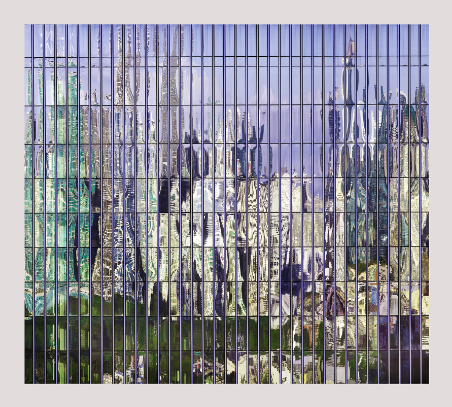
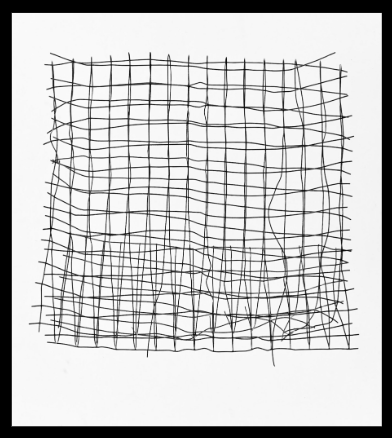
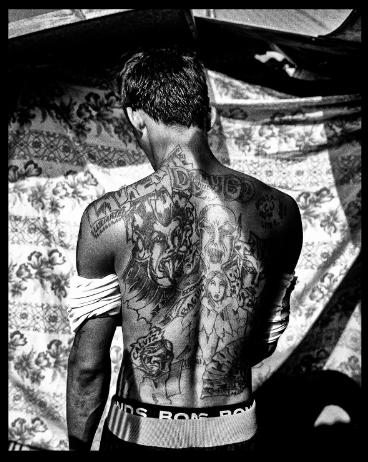
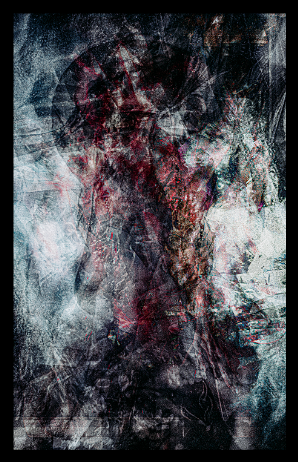
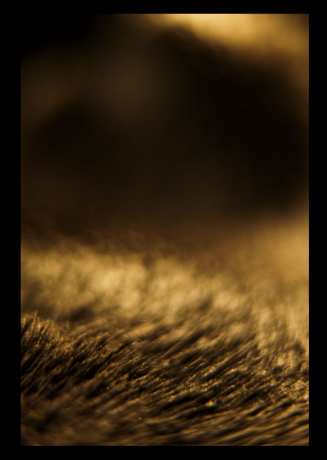
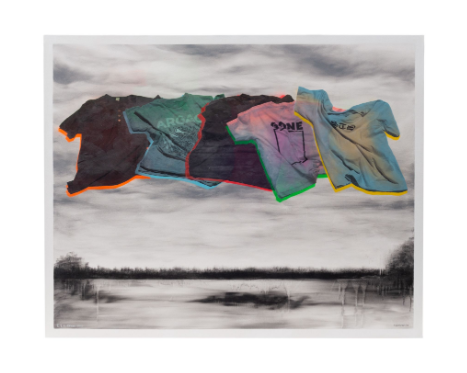
Get digital catalogue.
Explore exhibitions
Kontradestruction | Group Exhibition
Group Exhibition KONTRADestruktioN Showing between 18th January— 28th February 2025 FEATURED ARTISTBud OmengErwin Teves PascualGino JavierIkoy RicioIsrael RemoJoseph TecsonJun SabaytonRem San PedroUri de Ger To accomplish Destruktion is to find some fundamental...
Homemade | Group Exhibition
Group Exhibition Homeade Showing between 5th — 28th of September 2024 FEATURED ARTISTBenjie CabangisAaron CabangisLi CabangisZean Cabangis Since the 80’s, painter and now, professor emeritus in the UP College of Fine Arts, Benjie Cabangis, has been known to raise the...
Open House 2024 | Group Exhibition
Group Exhibition Open House 2024 Showing between 10th — 31st of August 2024 FEATURED ARTISTAcidhead Basilio Alvin Villaruel Alvin Zafra & Pristine De Leon Argie Bandoy At Maculangan Benjie's Cafe racer Buboy Cañafranca Dante Dizon David John Sarno Distort...
Explore Artists
Jay Francisco
Jay FranciscoBIOGRAPHY This series of paintings by Jay Francisco is inspired by branching out of his comfort zone, personally and artistically. His main focus is to encourage growth and abundance in his works and other aspects of his life, and for real growth to take...
Dennis Occeňa
Dennis James OcceňaBIOGRAPHY “Oftentimes, the ideas of my crafts come from nothing,” says artist Dennis James Occeña. “It’s ironic, but creative ideas appear after my brush on the canvas has been laid, and I can’t explain it.” Dennis discovered his artistic gifts at...
Gabe Naguiat
Gabe NaguiatBIOGRAPHY Gabe Naguiat (b. 1984) is a visual artist from Quezon City, Philippines."My work aims to raise the viewer's awareness of the multi-layered nature of our reality. I draw inspiration from graphic design, quantum physics, metaphysics, ancient...
